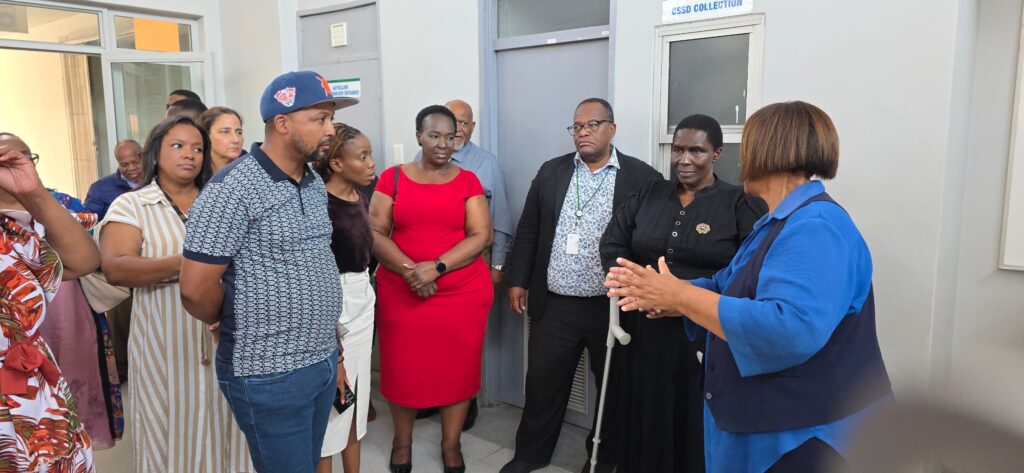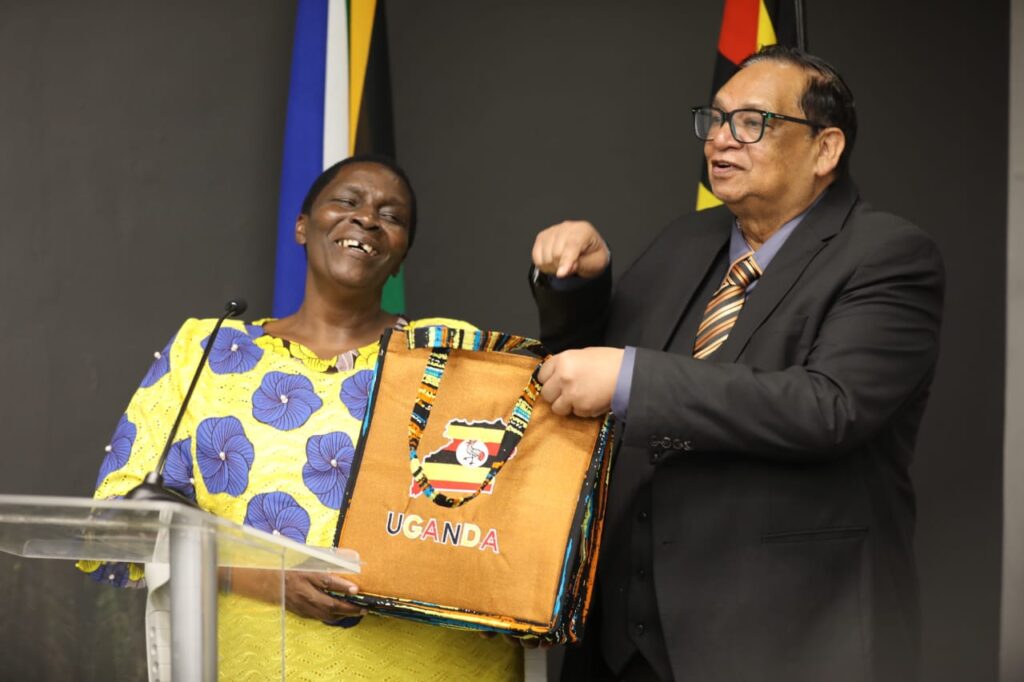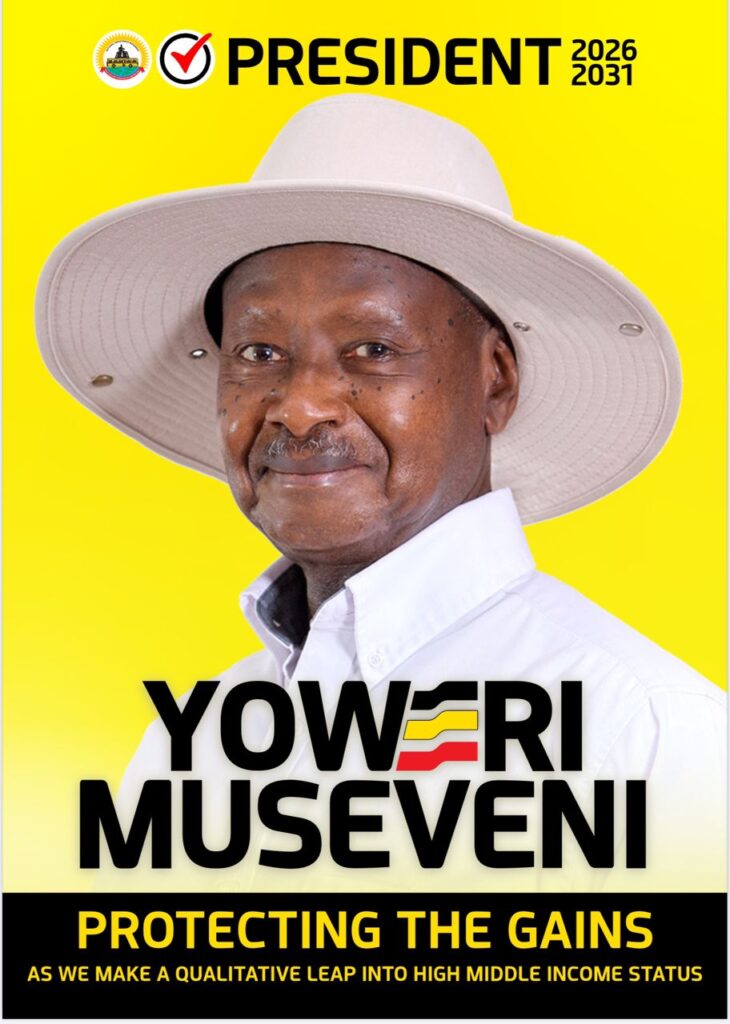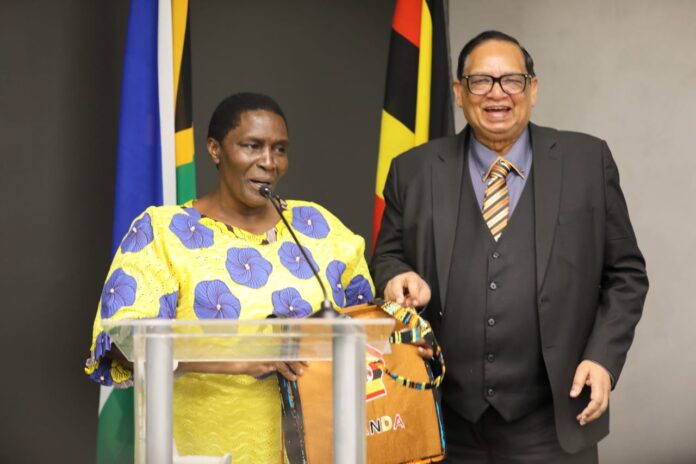Beyond the policy and institutional frameworks observed at the national level, the Ugandan delegation derived additional practical lessons from the Gauteng Department of Education, the Sunshine Association, and other special care and rehabilitation institutions including Tshwane District Community Health Centre. Insights show South Africa’s disability inclusion model integrates education, social protection, and rehabilitation in a coordinated and rights-based manner.
The benchmarking visit revealed that the South African government not only supports social protection service delivery but also funds and empowers organizations of persons with disabilities and social protection advocacy groups to hold duty bearers accountable. These organizations are legally supported to initiate actions when government entities fail to meet statutory obligations, ensuring compliance with the Social Assistance Act (2004) and related human rights commitments. This provides an important lesson for Uganda to promote legal advocacy mechanisms that empower social protection stakeholders to demand accountability from implementing institutions.

The Sunshine Association and the Gauteng Department of Education demonstrated the importance of community-based rehabilitation (CBR) as a bridge between social protection and health services. The integrated rehabilitation model ensures that children with disabilities receive coordinated support from therapists, including speech, physiotherapy, dental, occupational, and general medical services. Reviving CBR structures in Uganda through district health and community development departments would facilitate effective referral linkages to health, education, and economic empowerment services for persons with disabilities.
Early childhood intervention is central to South Africa’s approach. Centres such as the Sunshine Association Eldorado Park operate toy libraries as part of their early intervention programmes, helping children with disabilities develop fine and gross motor skills, communication abilities, and daily living skills. Uganda could adopt this concept in early childhood development centres, linking toy libraries with inclusive education and rehabilitation programmes to support school readiness among children with disabilities.

Under the Learners with Severe to Profound Intellectual Disabilities Conditional Grant, the Gauteng Department of Education and Special Care Centres operate through formal Memoranda of Agreement that define obligations of both government and non-profit partners. Uganda can adopt a similar model by signing district-level Memoranda of Understanding between the Ministry of Gender, Labour and Social Development, the Ministry of Health, and the Ministry of Education and private partners to facilitate referrals and resource-sharing for rehabilitation and special needs education services. This approach can also ensure that the National Child Disability Benefit supports costs associated with enrolment in rehabilitation centres and special schools.
South Africa’s education and social development departments apply GIS mapping and data systems such as the South African Schools Administration and Management System (SA-SAMS) to capture and track children with severe and profound disabilities. This enables targeted distribution of assistive devices, rehabilitation resources, and caregiver training. Uganda should consider adopting GIS mapping within the Child Disability Benefit Management Information System to identify regional disparities and ensure equitable resource allocation.

An important cross-sectoral lesson is the explicit inclusion of rehabilitation in health sector budgeting. Rehabilitation services are embedded within South Africa’s primary healthcare framework, ensuring that every person with a disability can access physiotherapy, occupational therapy, and speech therapy without extra cost. Uganda needs to advocate for rehabilitation services to be fully mainstreamed and budgeted at all levels of health service delivery, from health centre II to regional hospitals.
In South Africa, particularly within rehabilitation and special care centres, children receive multi-disciplinary health services on the same day in one coordinated setting—covering physiotherapy, speech therapy, occupational therapy, and psychosocial support. This integrated model minimizes caregiver costs and improves outcomes. Uganda can adapt this approach by promoting district-level one-stop service models for persons with disabilities.
The South African model underscores the need for professional accreditation in disability-related communication, including accredited sign language training for health workers. This ensures that healthcare personnel are able to communicate effectively with deaf clients and that sign language is recognised as a professional qualification within the public health system. Uganda can draw from this by institutionalising sign language certification for frontline service providers.
Across South African institutions, persons with disabilities are given service priority in public offices, healthcare facilities, and education institutions. They are not required to queue or undergo prolonged administrative procedures. This cultural and policy practice reinforces dignity and equal access. Uganda can strengthen enforcement of similar provisions under the Persons with Disabilities Act (2020) and ensure all service points implement priority access mechanisms.
South African partners also stressed the need to invest in early detection and prevention of disabilities, particularly through maternal health and community-based screening programmes. Integrating early intervention in Uganda’s health and ECD systems could significantly reduce the onset and severity of disabilities.
The visit highlighted the need to fast-track the implementation of the bilateral cooperation agreement between Uganda and South Africa on social protection and disability inclusion, including the establishment of a joint steering committee. Both countries also agreed to take a leading role in engaging with the African Union to accelerate the implementation of the African Union Protocol on the Rights of Persons with Disabilities.
A unique innovation observed in South Africa is the integration of funeral insurance within social protection mechanisms. This system not only ensures dignified burials for beneficiaries but also improves death reporting and facilitates case management transitions. Uganda can study this model to improve death registration, beneficiary updating, and continuity planning within social protection programmes.


